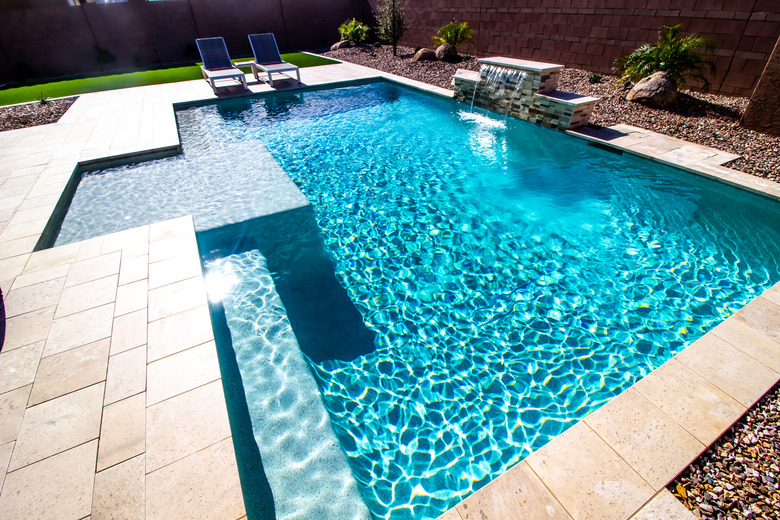What Is Pool Oxidizer?
We may receive a commission on purchases made from links.
Swimming pools need to be kept clean and disinfected. Chlorine is a common chemical used to keep pools sanitary. It ensures the water is clear instead of cloudy and reduces algae and bacterial growth. Sometimes, a pool needs additional cleaning and sanitizing with a pool oxidizer, which is known as shocking a pool.
Why Is Pool Oxidizing Necessary?
Why Is Pool Oxidizing Necessary?
A pool oxidizer helps keep the pool clean by eliminating grime, dirt, sunscreen, oils, and algae as well as other byproducts that may end up in the pool. A chemical reaction occurs when chlorine is poured into the pool water, and it begins to break down and create hypochlorous acid, which is important in eliminating algae and bacteria in the pool.
However, when too many organic particles are in the pool water, the chlorine starts to mix with them, producing chloramines instead of creating hypochlorous acid. Chloramines are produced when the nitrogen in urine, oils, sweat, or dirt combines with chlorine and creates a chemical reaction. One indicator that a pool has too many chloramines is if you notice the pool has an intense chlorine smell. When this occurs, it's likely that algae and bacteria will begin to grow in the pool. It's now time to oxidize the pool.
Reasons to Shock a Pool
Reasons to Shock a Pool
Sometimes, pool oxidation is referred to as superchlorination because additional chlorine or another chemical is mixed into the pool water to sanitize it. There are different factors to determine if a pool needs to be shocked. It's often recommended to oxidize a pool weekly, but other factors determine when to consider shocking the pool. Typically, a pool needs to be oxidized after a lot of use, after a heavy rainfall or a storm, after a change in water levels, or after someone has pooped in the pool. Cloudy, murky, or green pool water can also indicate that it's necessary to oxidize the pool.
Conduct a Water Chemistry Test
Conduct a Water Chemistry Test
Conducting a test to check the water's chemistry is the best way to know if the chlorine is doing its job. Tests are available at pool shops or online. The tests measure chlorine quantities in the pool by what is known as "free chlorine" and "total chlorine." Checking the pH level is also important; it should be around 7.4 to 7.6. Alkalinity levels should range from 100 to 150 parts per million. Oxidizing the pool works efficiently and effectively when the pH and alkalinity levels are in the proper range.
Types of Oxidizers
Types of Oxidizers
You can choose between a chlorine-based oxidizer or a nonchlorine oxidizer, and once it is applied, it's necessary to wait a minimum of 12 hours before jumping back into the pool. Adding these chemicals at night is recommended to minimize the UV rays affecting or altering the chemical compounds.
There are a few factors to consider when making a decision about which type is better for your pool. A chlorine-based oxidizer should be used when you want to oxidize and sanitize the pool, while a nonchlorine oxidizer can be used when you only want to oxidize and not sanitize the pool. This is usually used when there isn't a concern for algae or bacteria growth.
Typically, 1 ounce of shock treatment should be applied per 7,500 gallons of water to increase the parts per million by one.
